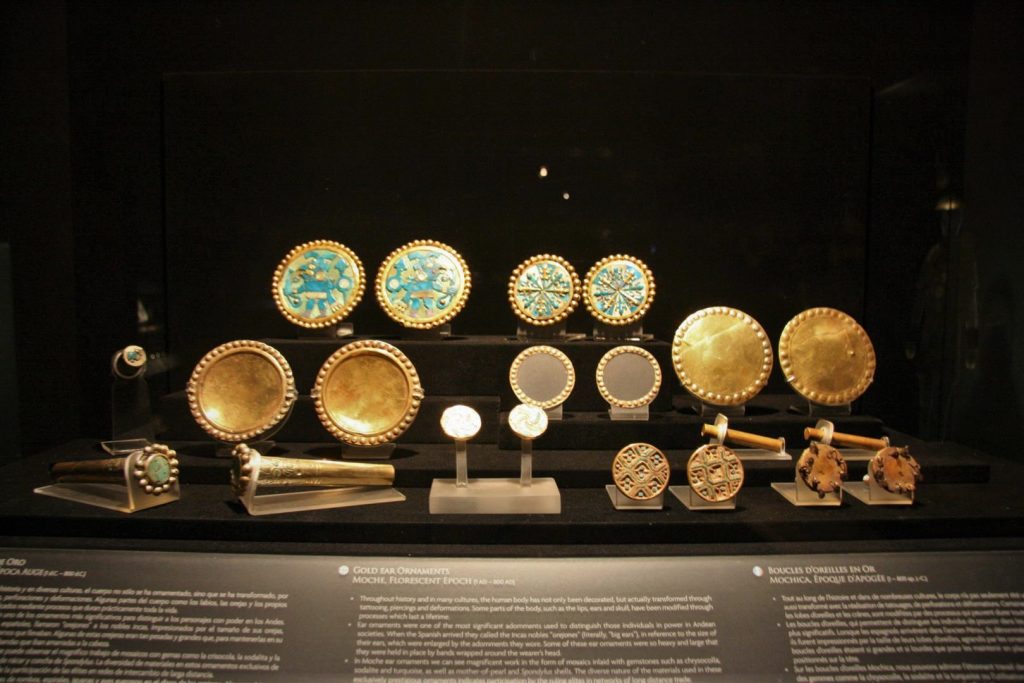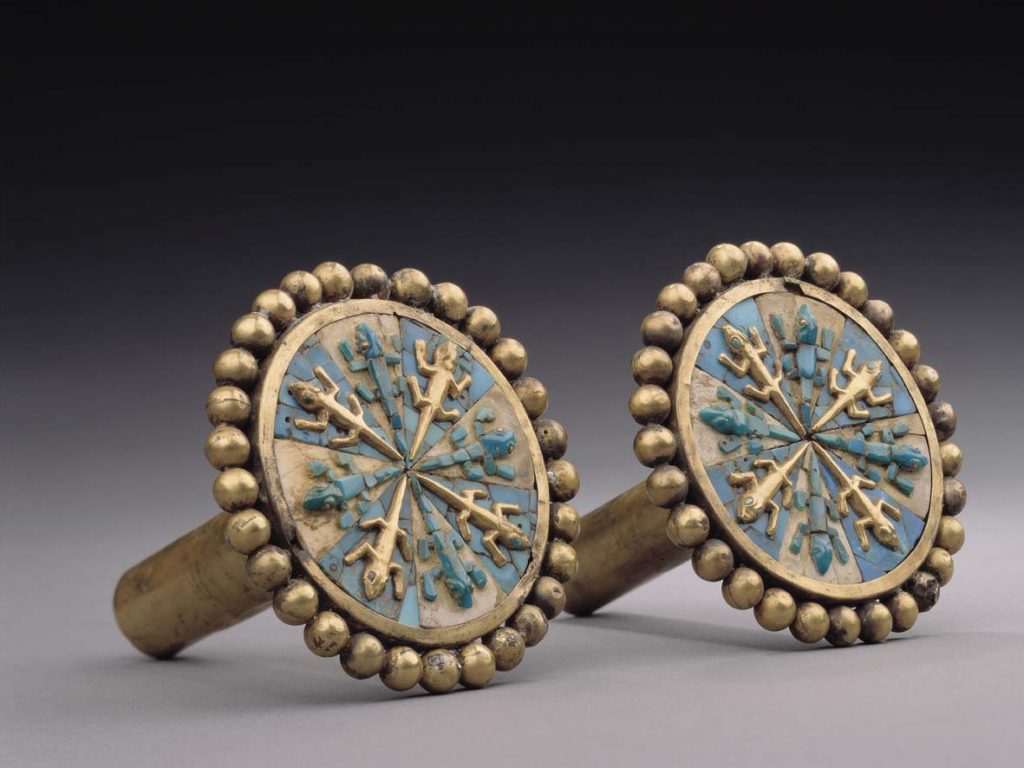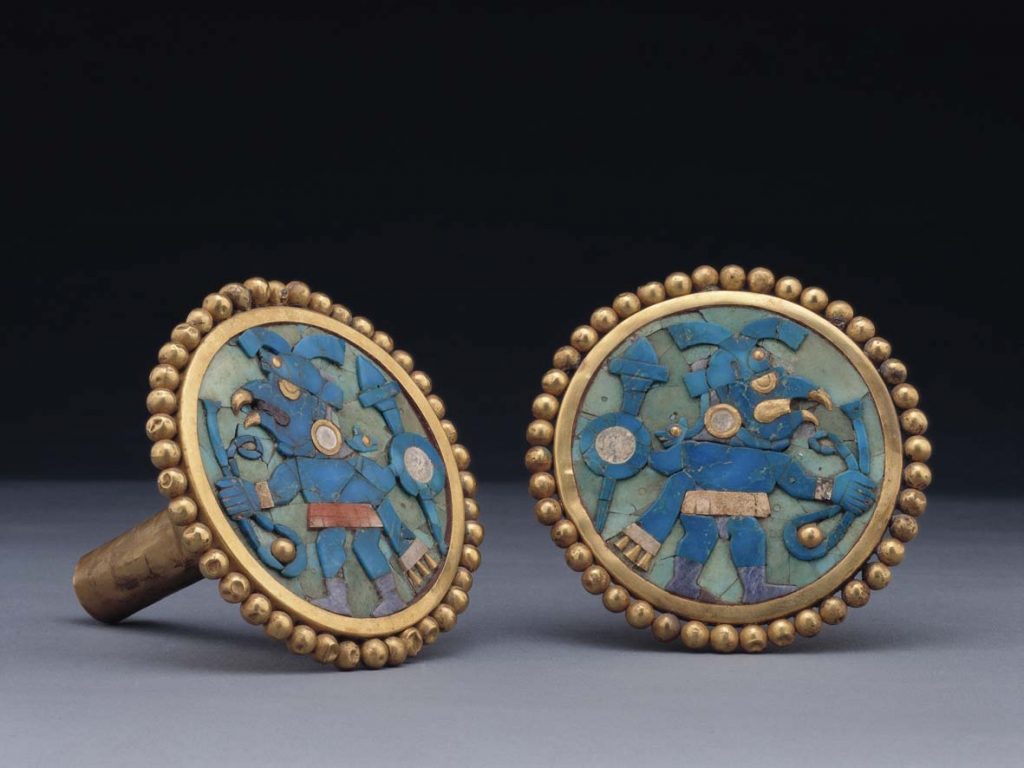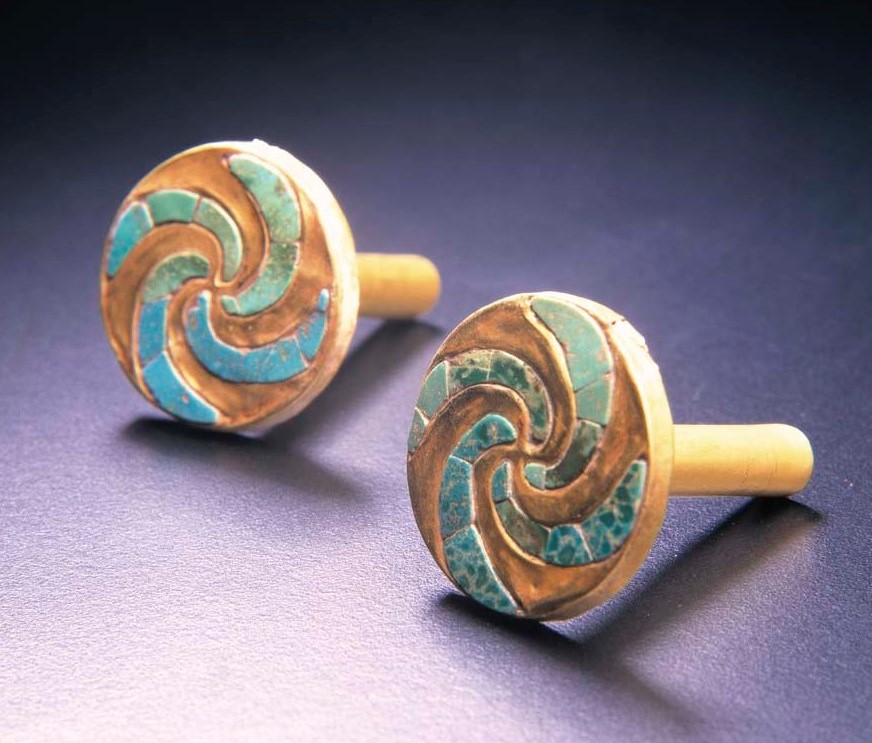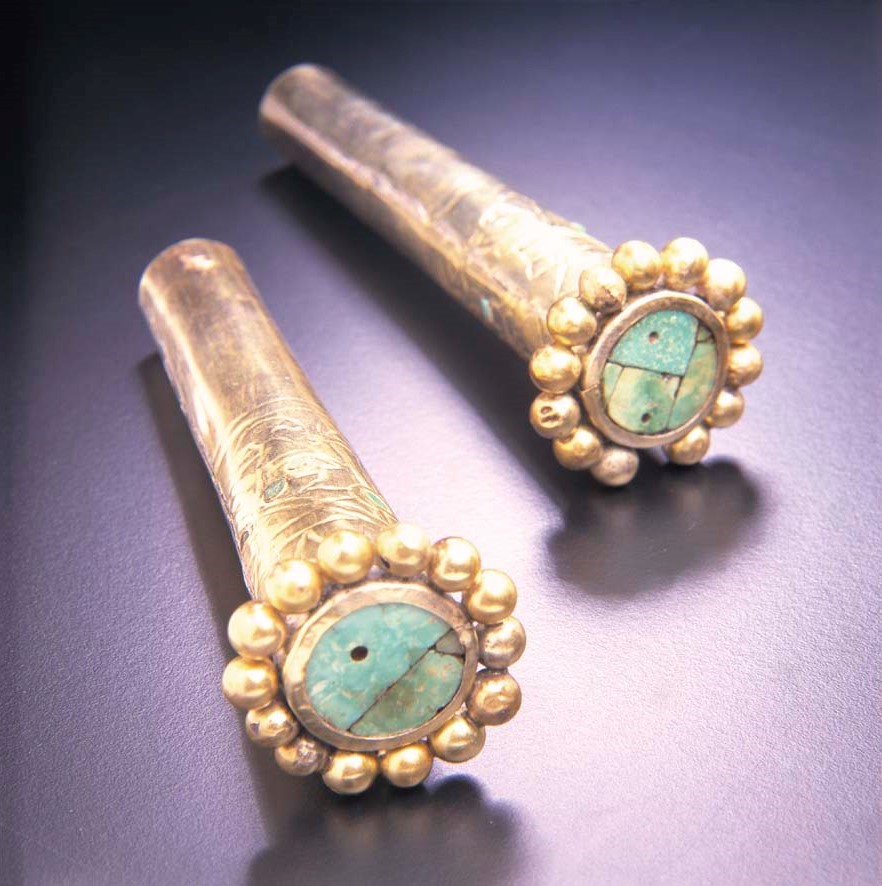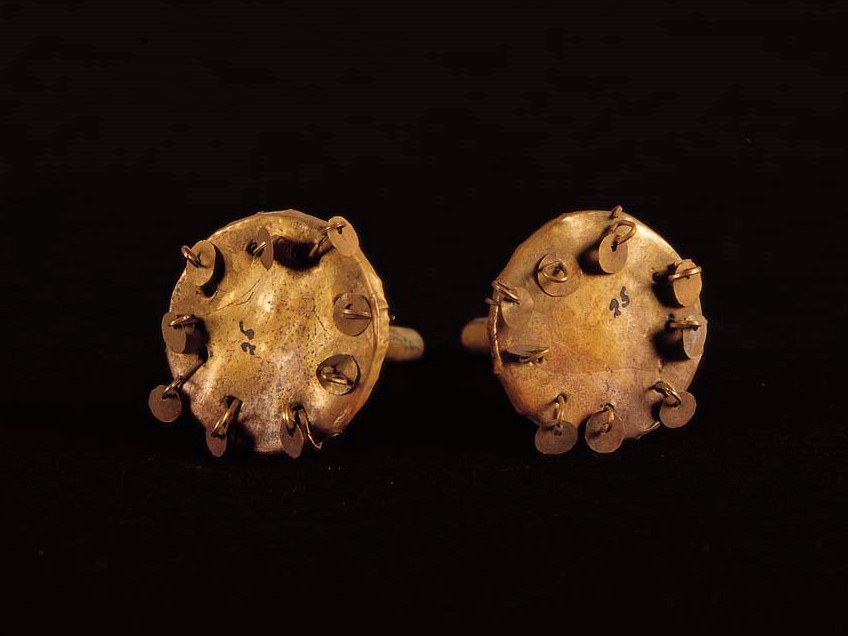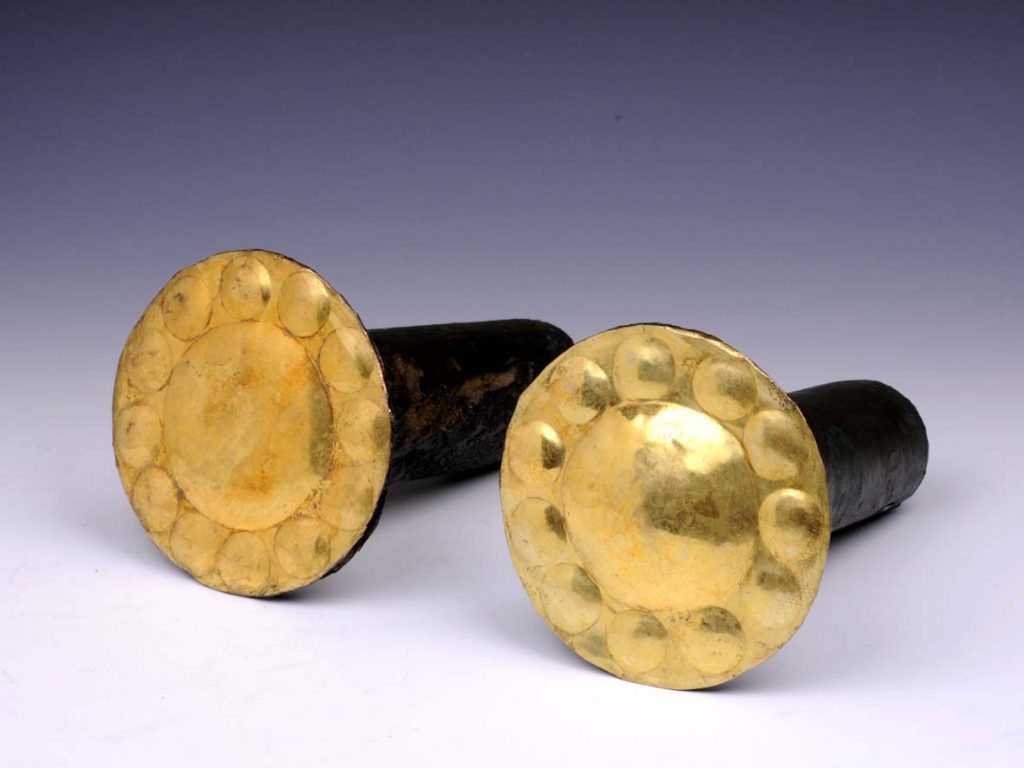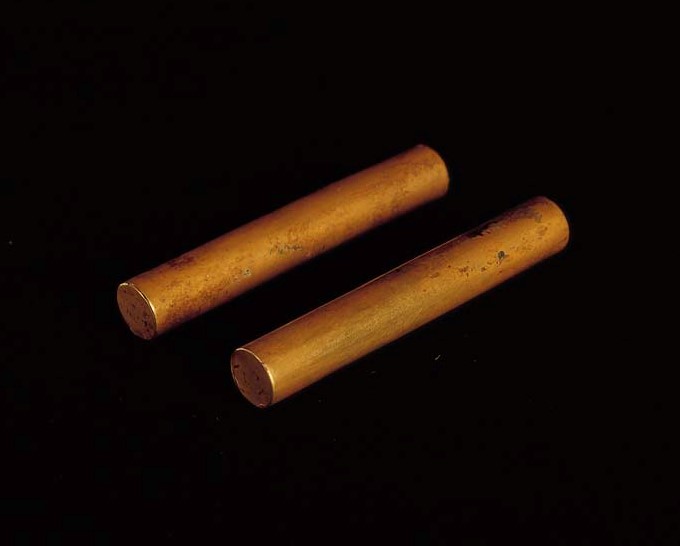Mochica Gold Ear Ornaments
Room 11, Vitrine 137
Metal
Peruvian Northern Coast
Florescent Epoch (1 AD – 800 AD)
ML100071 y ML100072, ML100098 y ML100099, ML100100 y ML100101, ML100102 y ML100103, ML100119 y ML100120, ML100189 y ML100190, ML100782 y ML100783, ML100784 y ML100785, ML100786 y ML100787, ML100788 y ML100789, ML100849 y ML100850, ML100852 y ML100853.
Throughout history and in many cultures, the human body has not only been decorated, but actually transformed through tattooing, piercings and deformations. Some parts of the body, such as the lips, ears and skull, have been modified through processes which last a lifetime.
Ear ornaments were one of the most significant adornments used to distinguish those individuals in power in Andean societies. When the Spanish arrived they called the Incas nobles “orejones” (literally, “big ears”), in reference to the size of their ears, which were enlarged by the adornments they wore. Some of these ear ornaments were so heavy and large that they were held in place by bands wrapped around the wearer’s head.
In Mochica ear ornaments we can see magnificent work in the form of mosaics inlaid with gemstones such as chrysocolla, sodalite and turquoise, as well as mother-of- pearl and Spondylus shells. The diverse nature of the materials used in these exclusively prestigious ornaments indicates participation by the ruling elites in networks of long distance trade.
The designs on the discs of the ear ornaments feature rhombuses, spirals, iguanas and bird warriors. Some of the rods of these ear ornaments were also finely decorated with depictions of ceremonial combat.
